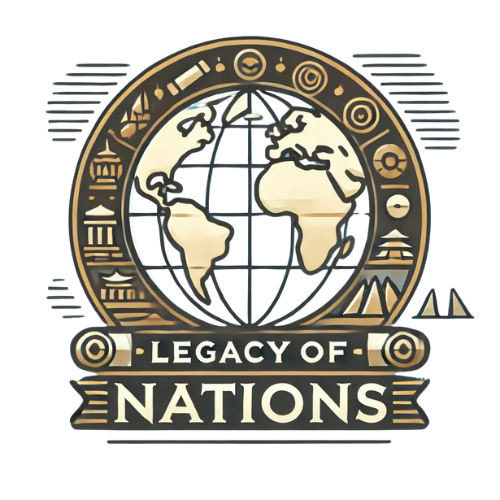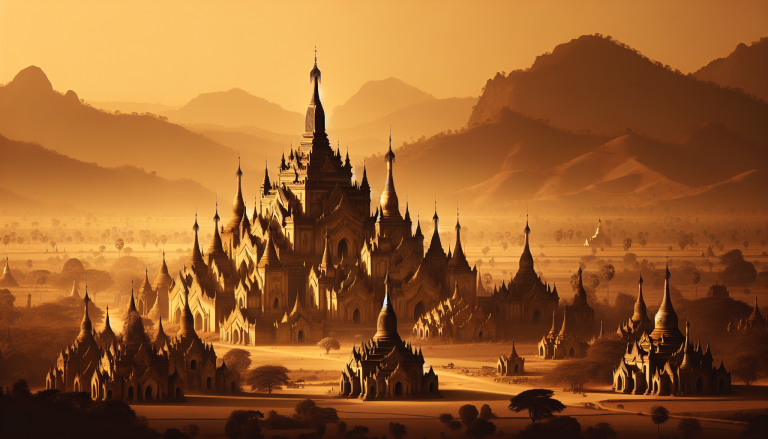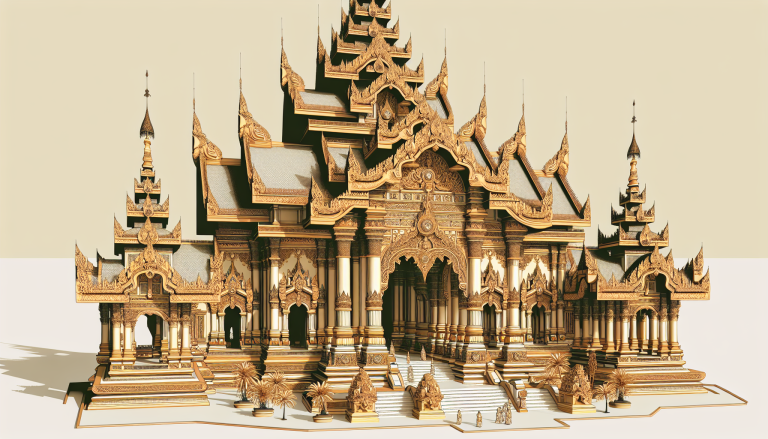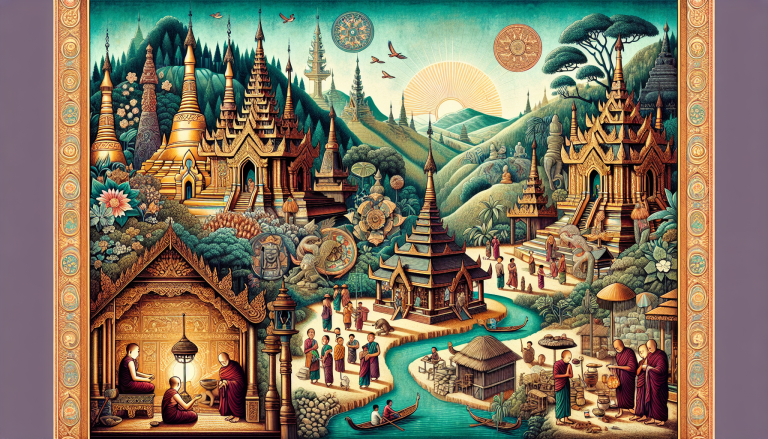Journey through Time: Your Guide to Myanmars Historical Documents
Explore Myanmar’s historical documents and uncover ancient civilizations in a friendly, engaging guide!
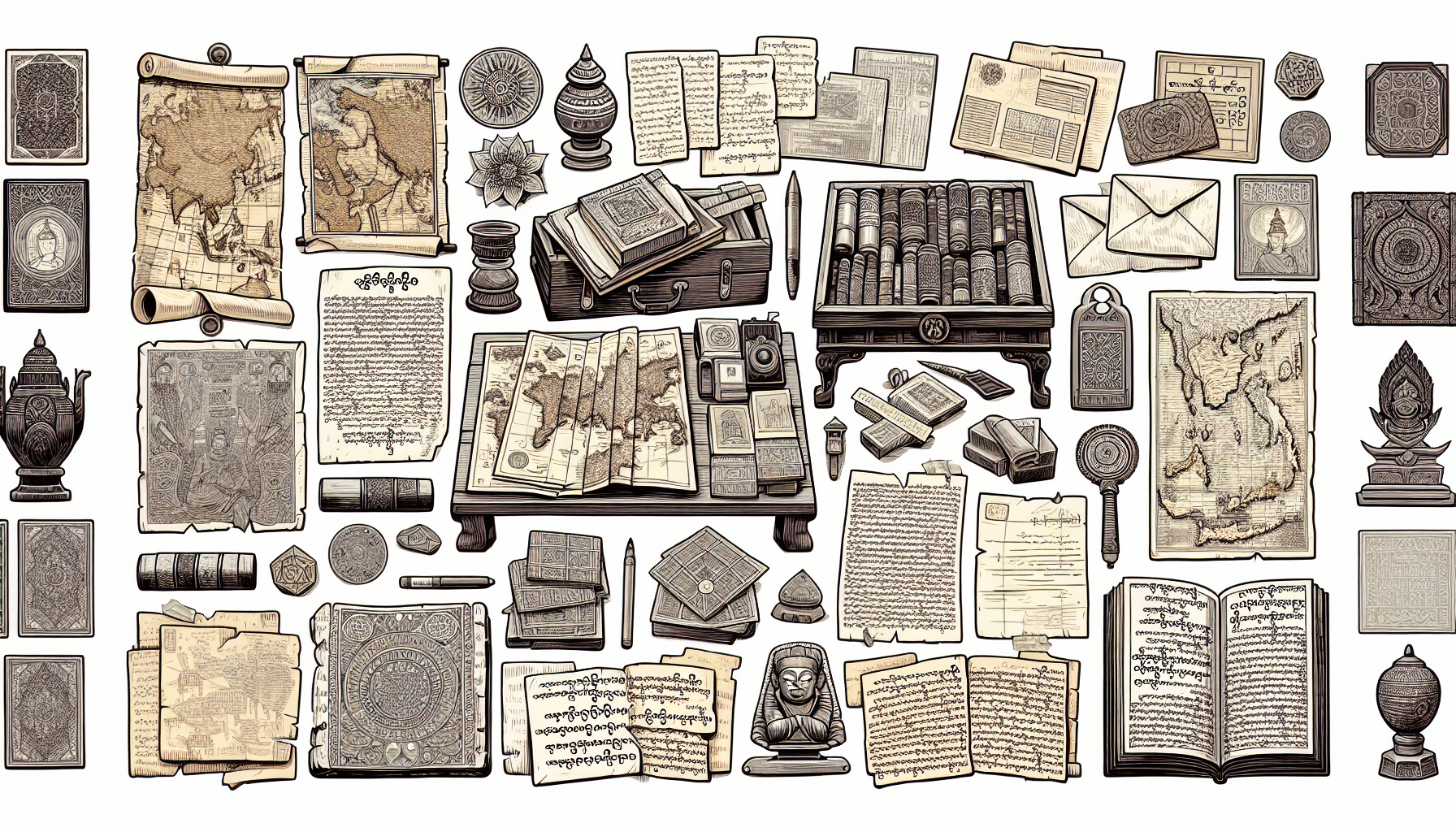
Ancient Settlements in Myanmar
Early Human Habitation
Humans lived in the region that is now Myanmar as early as 11,000 years ago. Archaeological evidence dates the first recognizable settlements to around 2500 BCE. These early inhabitants practiced cattle rearing and bronze production, which marked significant advancements in the region’s prehistoric era.
Bronze Age Advancements
By the Bronze Age, Myanmar saw remarkable developments. Excavations in regions such as Nyaung-gan provide a glimpse into Bronze Age life. The artifacts discovered here and in other sites like Samon Valley illustrate a society engaged in rice cultivation and metallurgy.
| Time Period | Key Activities |
|---|---|
| 2500 BCE | Cattle rearing, bronze production |
| 500 BCE – 200 AD | Rice-growing settlements, trade with Qin and Han China |
Bronze production techniques and the use of iron metallurgy were already well-developed by the 5th to 2nd century BCE (Quora). Trade, land, and production functions contributed to the power of these ancient states. By this time, the Pyu and the Mon people had also begun to establish themselves in the region, setting the stage for the rise of more complex societies.
For further reading, explore our articles on prehistoric Myanmar societies and Myanmar ancient culture.
Pre-Colonial Civilizations
Discovering the rich heritage and historical significance of Myanmar involves understanding its pre-colonial civilizations. You’ll find fascinating narratives and archaeological evidence that illustrate the development of two early significant cultures: the Mon and the Pyu civilizations.
Mon and Pyu Civilizations
The Mon and the Pyu were among the first identifiable civilizations in modern-day Myanmar. The Mon, who are believed to have migrated into the Ayeyarwady River delta and the Taninthayi coast around 3000 BC, founded their first kingdom, Suvarṇabhūmi, centered in Thaton around 300 BC. These early settlers contributed significantly to Myanmar’s ancient scripts and cultural development (Wikipedia).
On the other hand, the Pyu, considered proto-Burmans, settled in and around Pyay and northwestern Ayeyarwady valley. The Pyu people ruled several city-states and were influential in spreading Theravada Buddhism. The rich, cultural exchanges in these settlements have left a significant mark on the nation’s heritage.
| Civilization | Area of Settlement | Key Periods |
|---|---|---|
| Mon | Ayeyarwady Delta, Taninthayi Coast | 3000 BC – 300 BC |
| Pyu | Pyay, Northwestern Ayeyarwady Valley | circa 200 BC – 830 AD |
For a more comprehensive timeline of these civilizations, you can refer to the detailed burmese history timeline and explore other related historical sites in myanmar.
Arrival of Buddhist and Hindu Colonists
The influx of Buddhist and Hindu colonists had a profound effect on the cultural and religious landscape of Myanmar. Around 500 BC, Buddhist colonists from Orissa (modern-day Odisha, India) migrated to Southeast Asia. They settled in the Irrawaddy Delta of future Burma and built pagodas and other religious structures, further embedding Buddhist practices into the region.
In addition to the Buddhist influences, Hindu colonists from the Telugu Dynasty in central India migrated around 180 BC. These settlers established the ancient cities of Hanthawaddy and Syriam in lower Burma. The integration of Hindu customs significantly impacted local culture, architecture, and social structures.
| Colonists | Region | Key Contributions |
|---|---|---|
| Buddhist Orrisa | Irrawaddy Delta | Pagodas, Spread of Buddhism |
| Hindu Telugu Dynasty | Lower Burma | Establishment of Hanthawaddy and Syriam |
Knowledge about the influence of these colonists deepens your understanding of Myanmar’s historical diversity. Dive deeper into myanmar historical events to see how these migrations have shaped the broader narratives of the region’s past.
Discovering the pre-colonial era of Myanmar through its ancient civilizations and early colonists offers you a glimpse into the roots of its cultural and historical heritage. As you explore further, you’ll find narratives that reveal the essence of Myanmar’s past, enhancing your journey through its historical documents. For more on linguistic shifts and cultural evolution, revisit the evolution of Burmese language and its impact on contemporary Myanmar.
Inscriptions and Manuscripts
When exploring the fascinating history of Myanmar, the inscriptions and manuscripts left behind by ancient settlements provide invaluable insights into the past. These documents serve as windows into the lives, beliefs, and governance of early civilizations in this region.
Oldest Surviving Records
The oldest surviving records in Myanmar are predominantly inscriptions set up by kings, royal families, court officials, and wealthy families. These inscriptions are considered among the most accurate Burmese historiographic materials due to their durability. They often detail significant events, religious dedications, and royal decrees.
| Record Type | Time Period | Notable Features |
|---|---|---|
| Earliest Inscriptions | 3rd and 2nd centuries BCE | Set up by royalties and officials |
| Abundant Stone Inscriptions | From the 11th century onwards | Detailed accounts of royal and religious events |
Stone inscriptions from the Pagan era provide the first evidence of the Burmese language, dating back to the 11th and 12th centuries (Wikipedia). These inscriptions are pivotal in understanding the early development of the Burmese script and the socio-political climate of the time.
In contrast, the earliest chronicles written on palm-leaf manuscripts mostly date from the 16th century onwards. These palm-leaf manuscripts further enriched the historical records but are rarer and often more costly to preserve.
Preservation Challenges
Preservation of these invaluable historical documents poses several challenges. Warfare and conflicts have been the primary contributors to the destruction of many early manuscripts. The constant power struggles and invasions over the centuries have led to the loss of numerous records.
| Preservation Challenge | Impact |
|---|---|
| Warfare Destruction | Loss of early manuscripts |
| Natural Deterioration | Fragility of palm-leaf manuscripts |
| Cost of Preservation | Expensive to conserve rare pieces |
Increasing literacy rates, especially among monks in the late 18th century, played a crucial role in the preservation of many manuscripts. However, the natural fragility of palm-leaf manuscripts means that careful conservation efforts are essential to maintain these historical documents.
The transition from oral traditions to written records in ancient Myanmar highlights the advancements in the region’s documentation and historiography. By understanding the challenges faced in preserving these records, one can appreciate the depth and resilience of Myanmar’s historical heritage. For more about the intriguing history of Myanmar, consider exploring our articles on myanmar historical events, ancient myanmar civilizations, and burmese monarchs.
Evolution of Burmese Language
Old to Modern Burmese
The evolution of the Burmese language offers a fascinating glimpse into Myanmar’s rich history. The earliest recorded form of Burmese, known as Old Burmese, dates back to the 11th and 12th centuries. This iteration is evidenced by stone inscriptions from the Pagan era. Over time, the language transitioned into Middle Burmese around the 16th century, reflecting the sociopolitical changes of the time.
By the mid-18th century, Modern Burmese began to take shape. This period coincided with a significant rise in male literacy rates, which soared to nearly 50% in Burma. The table below outlines the key phases in the evolution of the Burmese language:
| Period | Time Frame | Key Features |
|---|---|---|
| Old Burmese | 11th-12th Century | Stone inscriptions from the Pagan era |
| Middle Burmese | 16th Century | Transitional phase reflecting societal changes |
| Modern Burmese | Mid-18th Century | Rise in male literacy rates to nearly 50% |
The transformation of Burmese language is not merely a linguistic phenomenon but also a reflection of Myanmar’s historical and cultural shifts. For more fascinating details, check out ancient Burmese scripts.
Language Shifts in Different Regions
The shifts in the Burmese language across different regions of Myanmar are equally intriguing. One significant transition occurred in Lower Burma. The victory of the Burmese-speaking Konbaung Dynasty over the Mon-speaking Restored Hanthawaddy Kingdom in 1757 accelerated the shift from the Mon to Burmese language in this region. By 1830, approximately 90% of the population in Lower Burma identified as Burmese-speaking Bamars.
| Region | Time Frame | Language Transition |
|---|---|---|
| Lower Burma | 1757 | Shift from Mon to Burmese |
| Lower Burma | 1830 | 90% population spoke Burmese |
These linguistic changes speak volumes about the region’s historical conquests and cultural integrations. For more insights on Myanmar’s linguistic history, explore myanmar history and culture.
Understanding the evolution of the Burmese language provides valuable context for appreciating Myanmar’s storied past. From inscriptions to scripts, each phase marks a significant milestone in the rich tapestry of Burmese heritage. If you’re keen on diving deeper into Myanmar’s historical documents, don’t miss our guide on myanmar historical research and burmese history timeline.
